By the NCFishes.com Team
There are four species of trout and salmon in North Carolina (Table 1; NCFishes.com; Tracy et al. 2020). [Please note: Tracy et al. (2020) may be downloaded for free at: https://trace.tennessee.edu/sfcproceedings/vol1/iss60/1.] Unlike most fish species found in North Carolina’s waters, the Family Salmonidae are known collectively and commonly as just trout. However, one can hear people call Brook Trout “brookies, speckled trout, or specks”. Their four common names – Rainbow, Brown, and Brook trout, and Sockeye Salmon are the American Fisheries Society-accepted common names (Page et al. 2013) and each of the scientific (Latin) names actually means something (please refer to The Meanings of the Scientific Names of Salmonidae, page 7). However, in North Carolina and elsewhere Sockeye Salmon populations that are not anadromous (i.e., not migrating from the ocean to fresh water to spawn because they are land-locked populations) are called Kokanee.
Table 1. Species of trout and salmon found in North Carolina.| Scientific Name/ American Fisheries Society Accepted Common Name | Scientific Name/ American Fisheries Society Accepted Common Name |
|---|---|
| Oncorhynchus mykiss - Rainbow Trout | Salmo trutta – Brown Trout |
| Oncorhynchus nerka – Sockeye Salmon | Salvelinus fontinalis – Brook Trout |
North Carolina’s only indigenous (native) species of trout is the Brook Trout, specifically the Southern Appalachia strain, and it was historically found throughout the Appalachian Mountains on both sides of the Eastern Continental Divide (NCWRC undated). With the onset of largescale industrial logging resulting in the habitat and water quality degradation of many mountain streams, the Northern strain of Brook Trout, Rainbow Trout, and Brown Trout were introduced in the 1870s and 18880s to offset the dwindling populations and numbers of Southern strain Brook Trout. In the later 1950s-early 1960s Sockeye Salmon were stocked in Nantahala Lake.
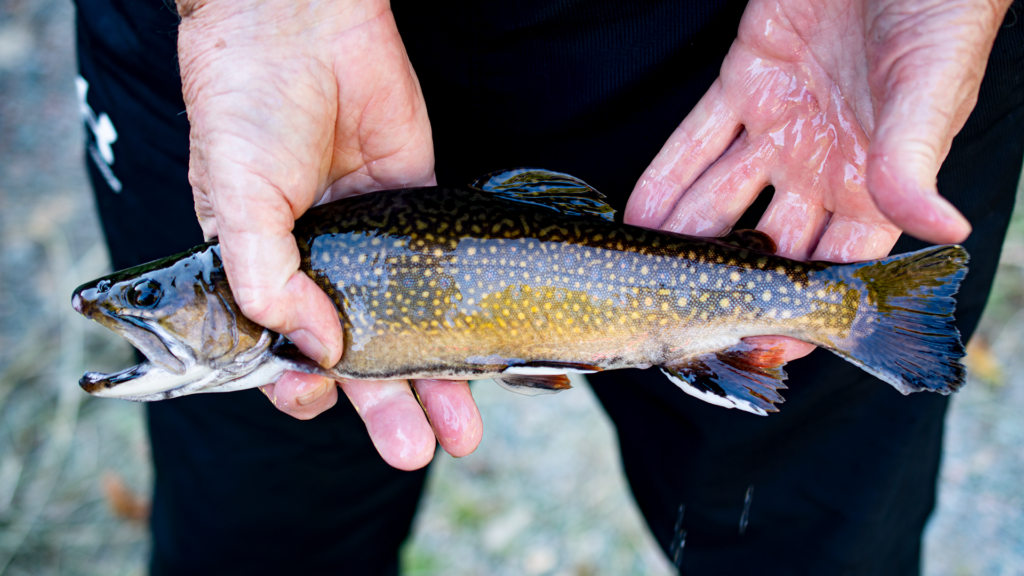
Rainbow Trout was first stocked as a sportfish in the late 1870s-early 1880s in suitable waters across North Carolina in the French Broad, Linville, Johns, Catawba, Broad, Green, Yadkin, Pigeon, and Dan rivers (Tracy et al. 2020). [Note: see Supplemental Maps 1-3, page 8, showing North Carolina’s 100 counties, 21 river basins, and 4 physiographic regions.] Today, Rainbow Trout, wild (naturalized) and stocked populations, are found throughout all Mountain basins and in the montane reaches of Atlantic slope basins, including the Roanoke, Yadkin, Catawba, Broad, and Savannah (Map 1).
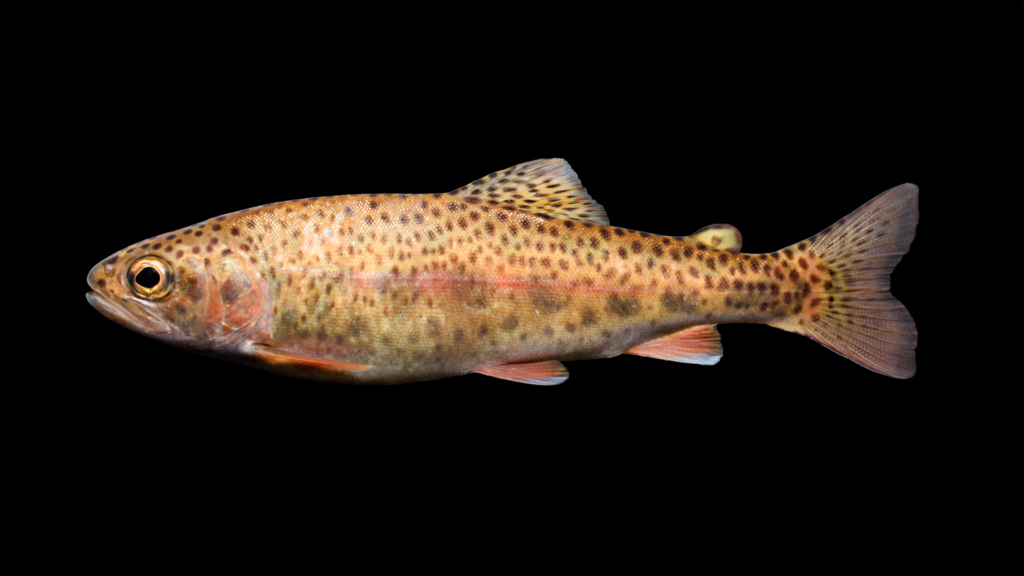
Sockeye Salmon was stocked in 1959 and the 1960s as a forage fish for Rainbow Trout and as a sportfish in the Nantahala Lake (Little Tennessee basin) where it persists today (Map 2; Tracy et al. 2020). The population in Nantahala Lake is not self-sustaining and persists only through periodic stockings by the North Carolina Wildlife Resources Commission.
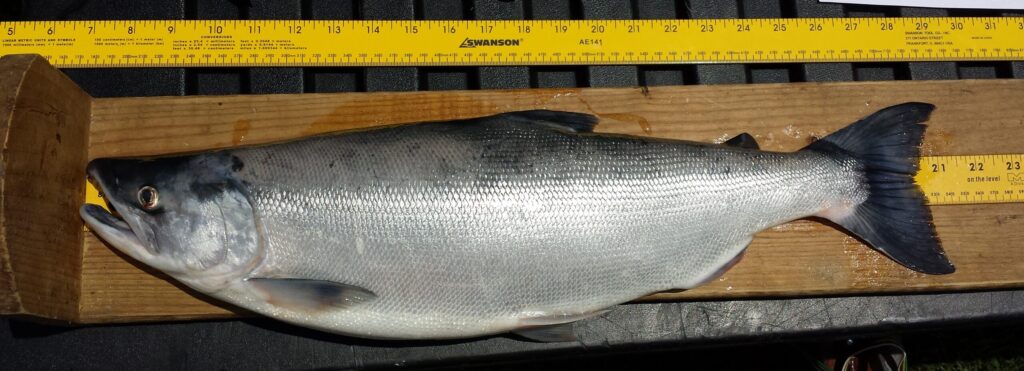
Brown Trout has been widely stocked as a sportfish since the late 1880s and is now found as wild (naturalized) and stocked populations throughout all Mountain basins and in the montane reaches of Atlantic slope basins, including the Roanoke, Yadkin, Catawba, Broad, and Savannah (Map 3; Tracy et al. 2020).
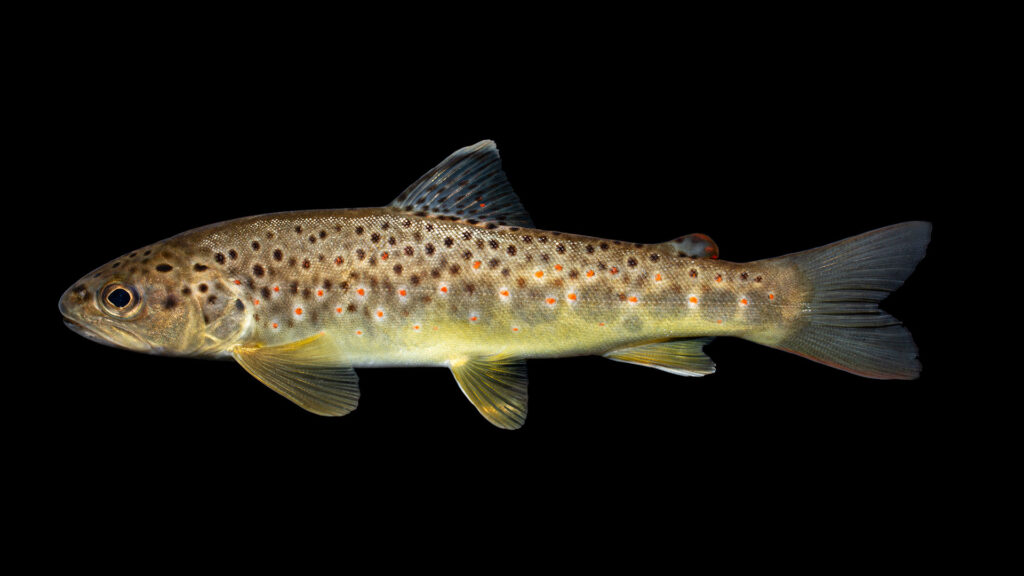
Brook Trout is found in all Mountain basins and in the headwater montane streams of the Savannah, Yadkin, and Catawba; it has also been stocked into the Broad and Roanoke basins where it is not indigenous (Map 4; Tracy et al. 2020). However, today most wild populations are now restricted to clear, cold, well-oxygenated, high elevation, high gradient and turbulent streams beneath a canopy of rhododendron, Eastern Hemlock, Yellow Poplar, and other native trees of the Appalachian Mountains.
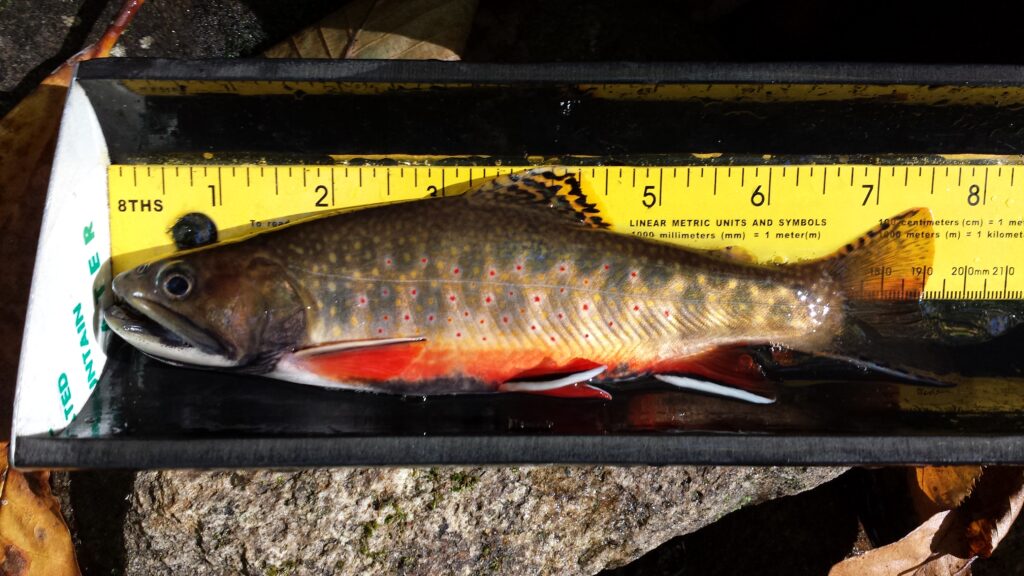
Most wild Brook Trout in our most remotest streams, are only about 130 to 200 mm (5 to 8 inches) in length, although hatchery reared and stocked Brook Trout may approach about 700 mm (27 inches). Rainbow and Brown trout can get as big as about 825 mm (32 inches) and the North Carolina record for the largest Kokanee caught (see Figure 2 in the accompanying Identification Key to the Trout and Salmon (Family Salmonidae) in North Carolina) was about 610 mm (24 inches) in length.
Because all the species in the Family Salmonidae are classified and managed as game species by the North Carolina Wildlife Resources Commission (NCWRC 2020), none are considered imperiled in North Carolina (NCAC 2017; NCNHP 2020; NCWRC 2017). For more specific information on North Carolina’s trout species, please see: https://www.ncwildlife.org/Learning/Species/Fish/Trout or any of the North Carolina Wildlife Resources Commission sport fish profiles (NCWRC 2010a; NCWQRC 2010b; NCWRC 2010c; NCWRC undated).
The identification of trout and salmon is relatively straight-forward. Key characteristics for their proper identification include the presence (and location) or absence of spots on the body and fins and pigmentation patterns on the pectoral, anal, and adipose fins (please refer to the Identification Key to the Trout and Salmon (Family Salmonidae) in North Carolina).
If you have troubles with your identifications, just send us (https://ncfishes.com/contact/) an e-mail and include as many quality digital photographs as you can along with all the pertinent locality descriptors so that we will know from where the fish came.